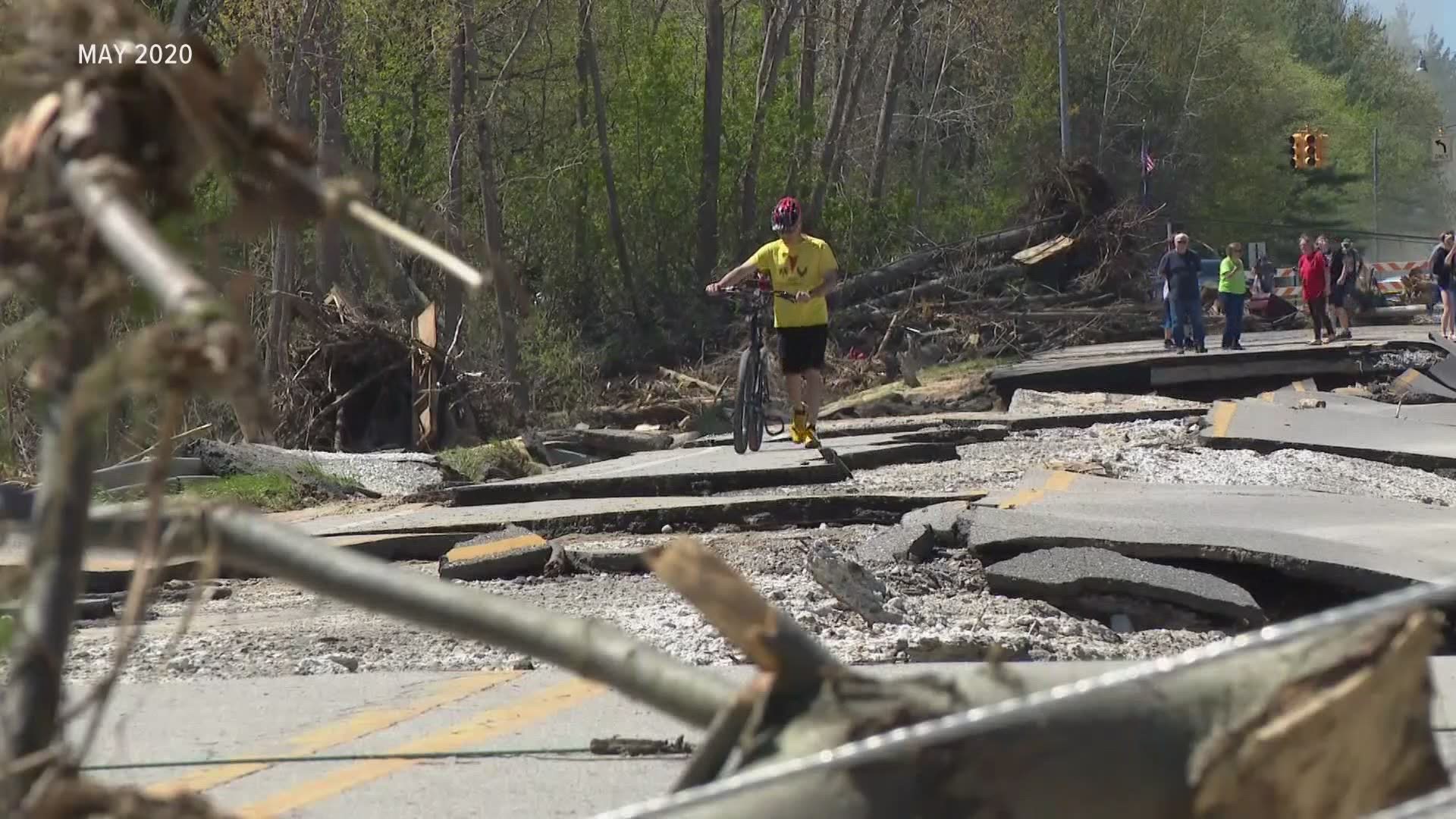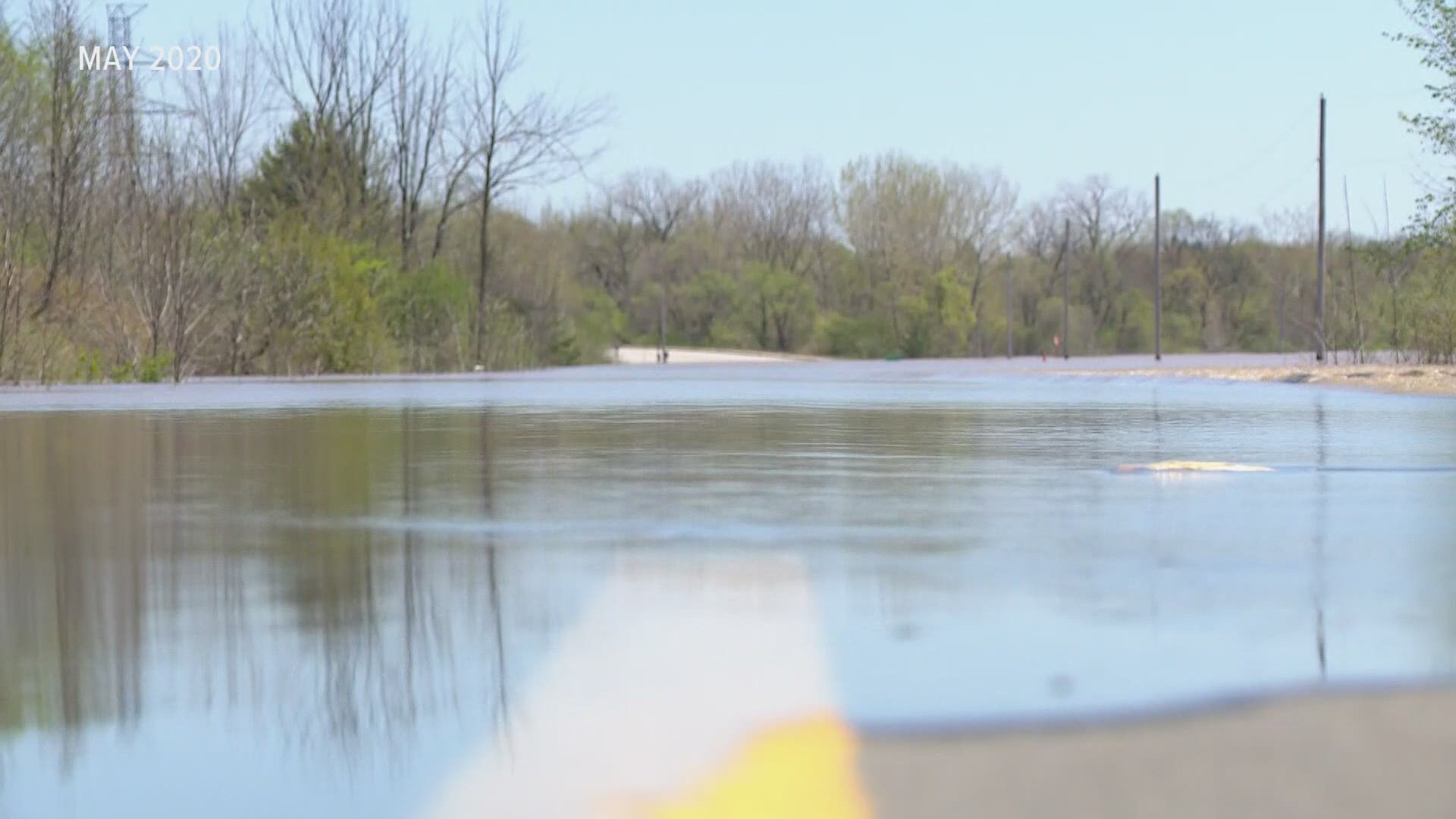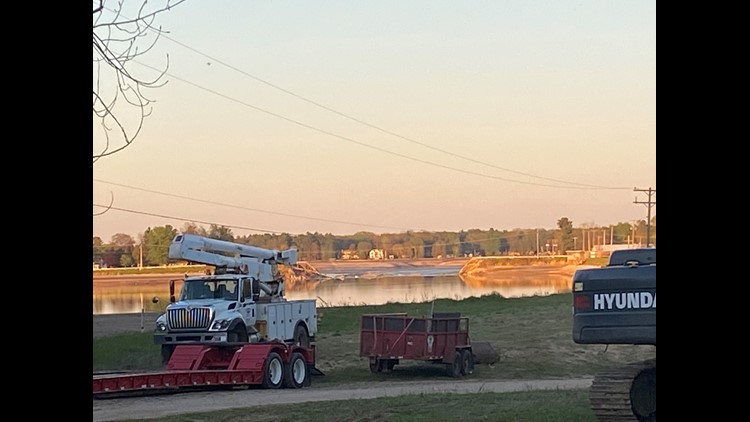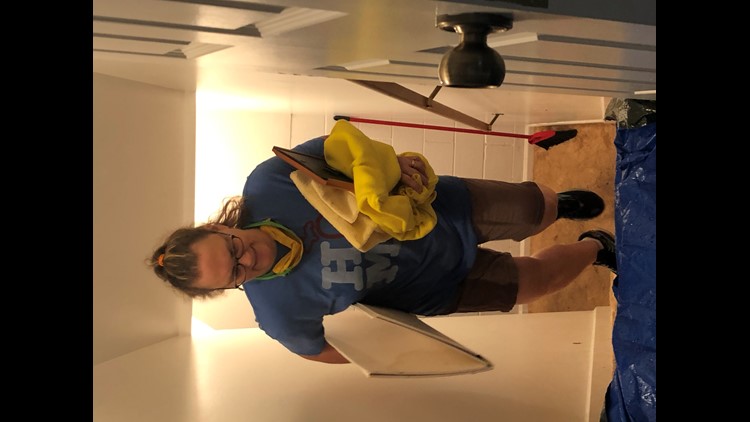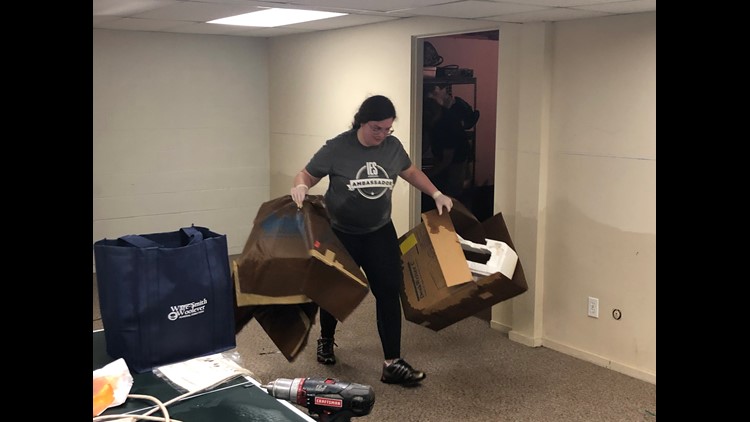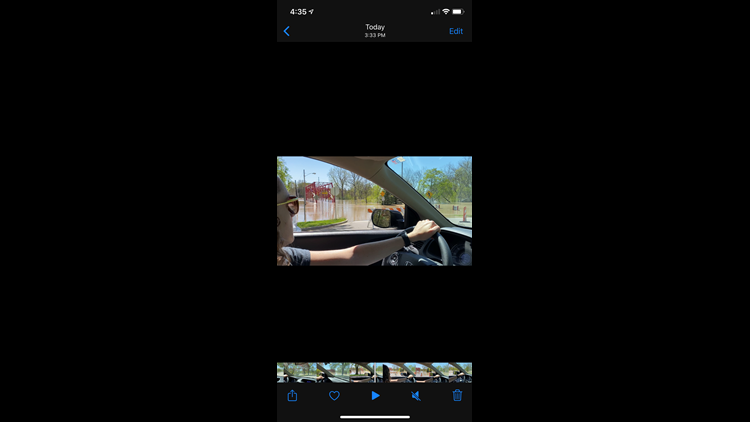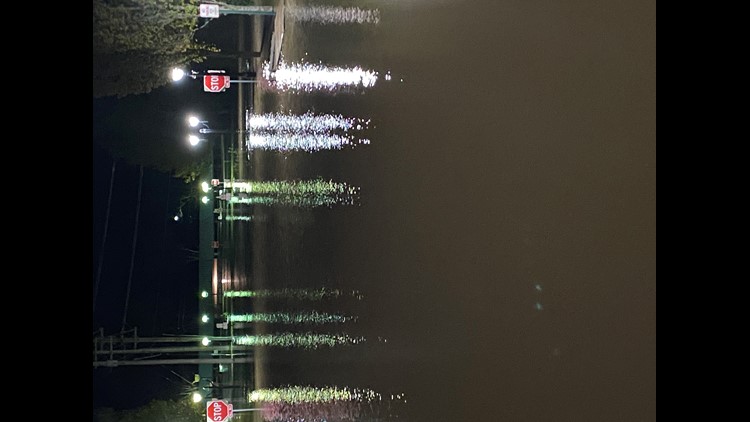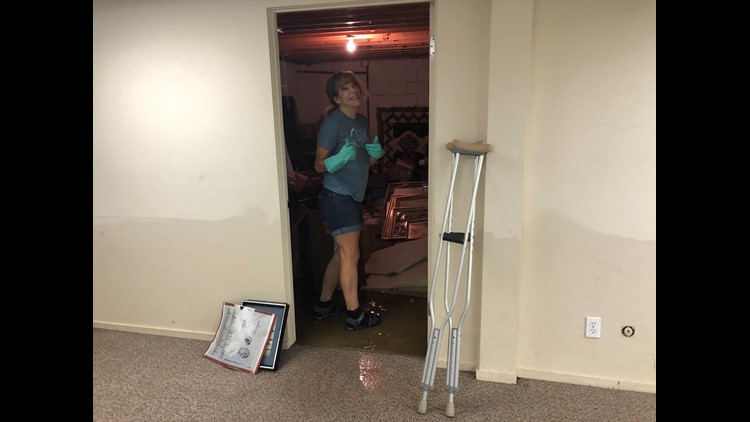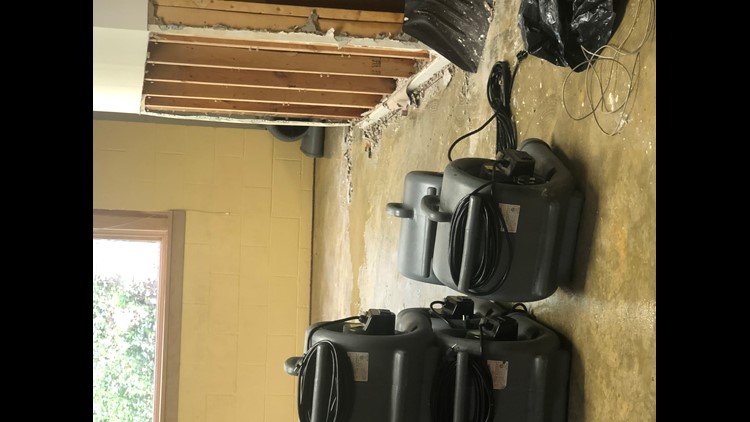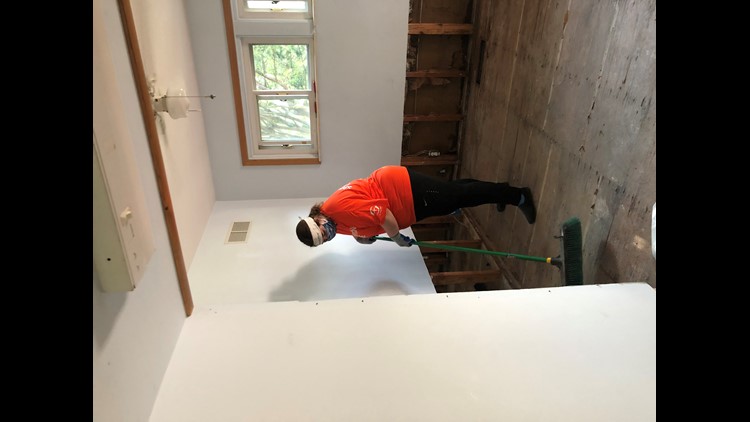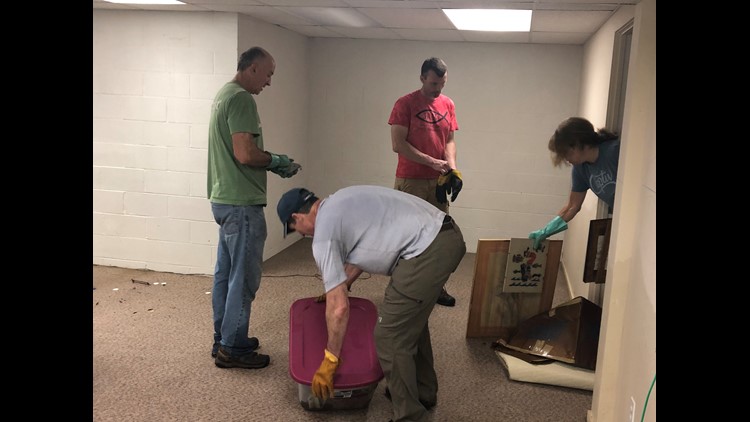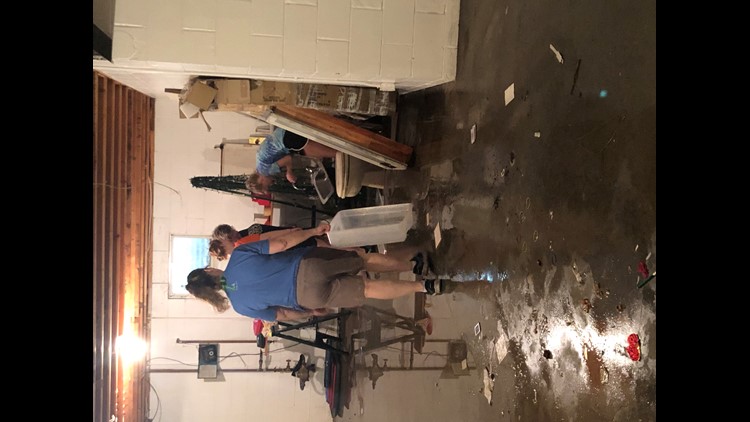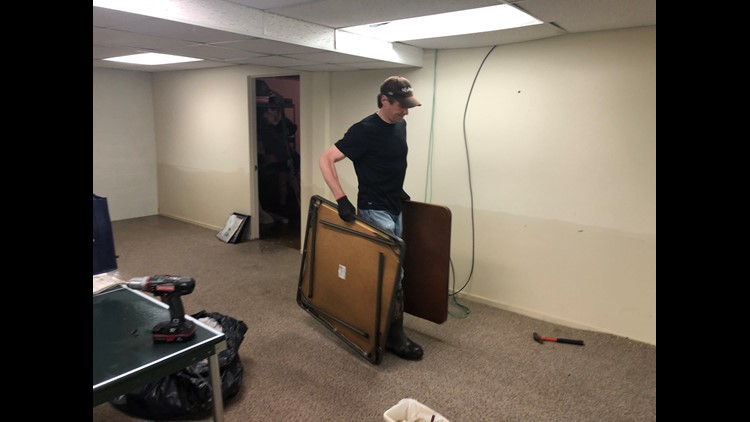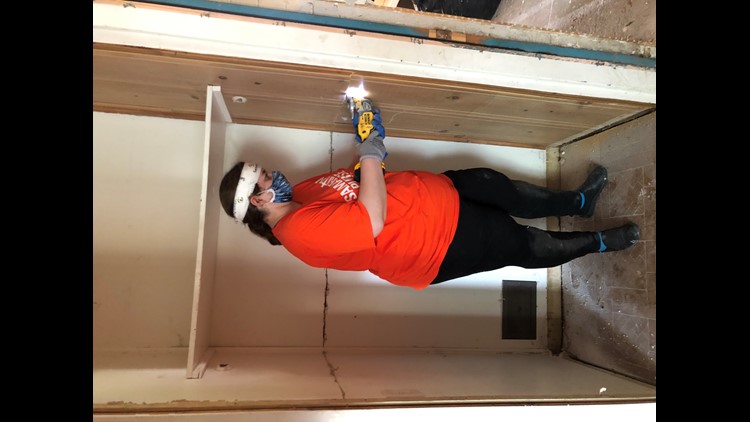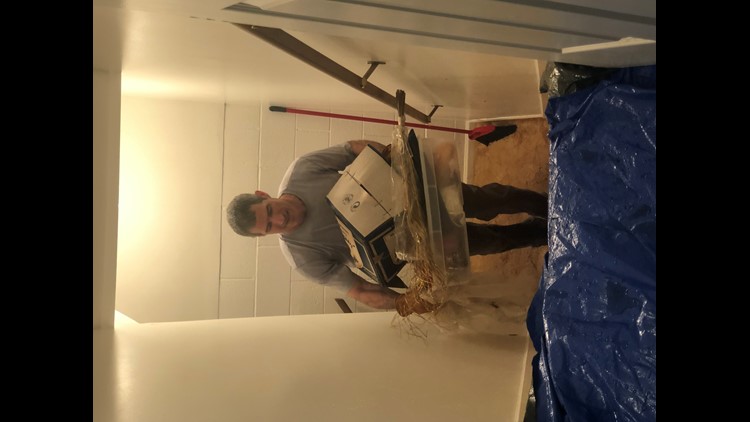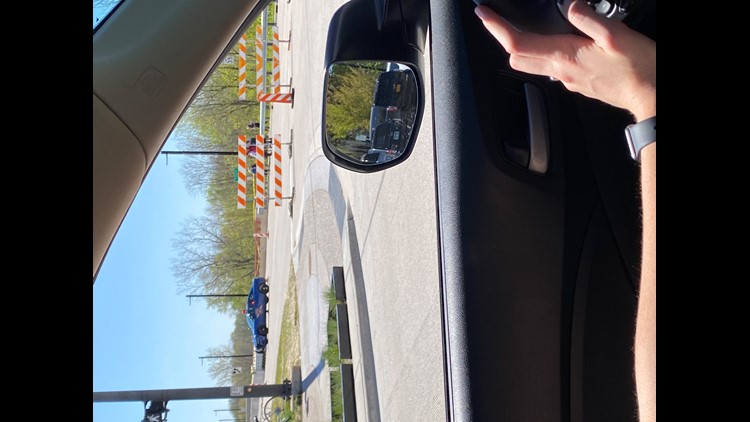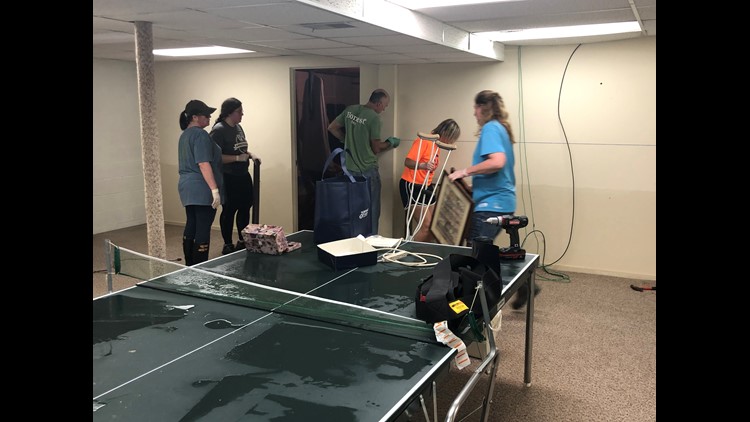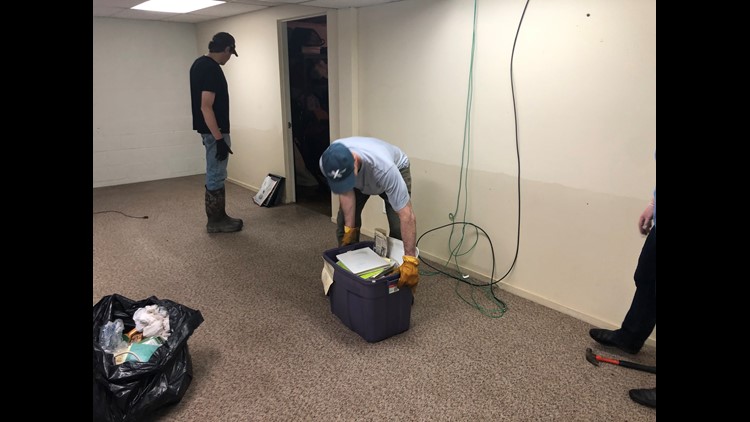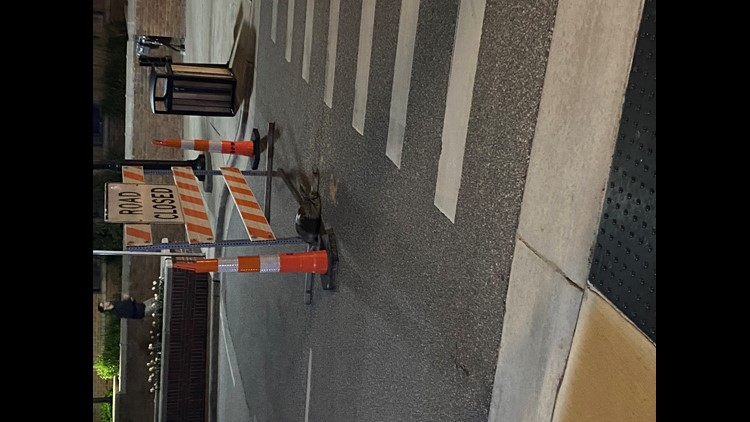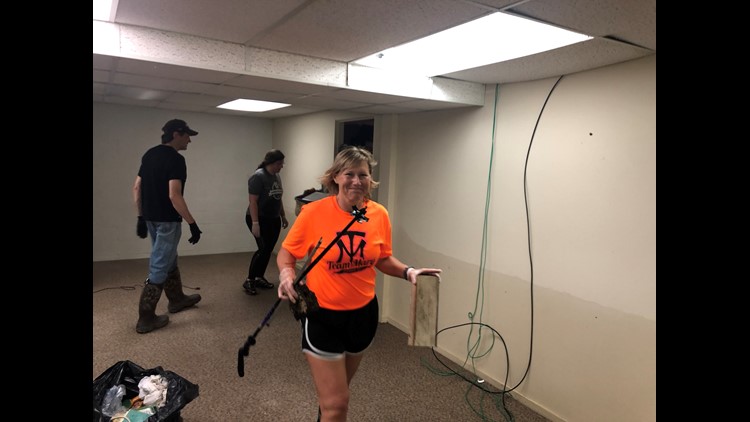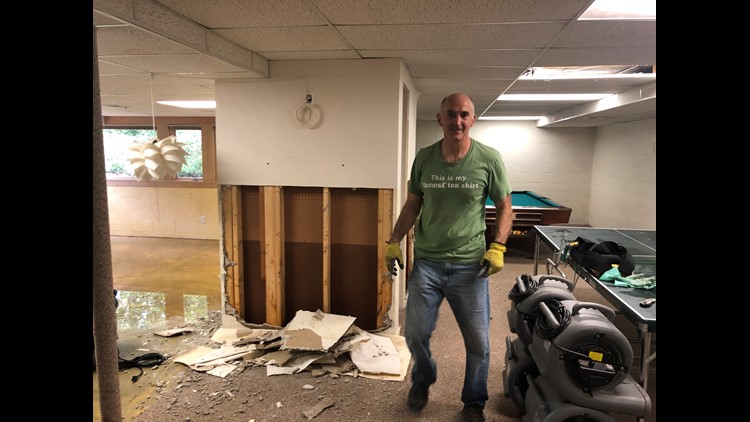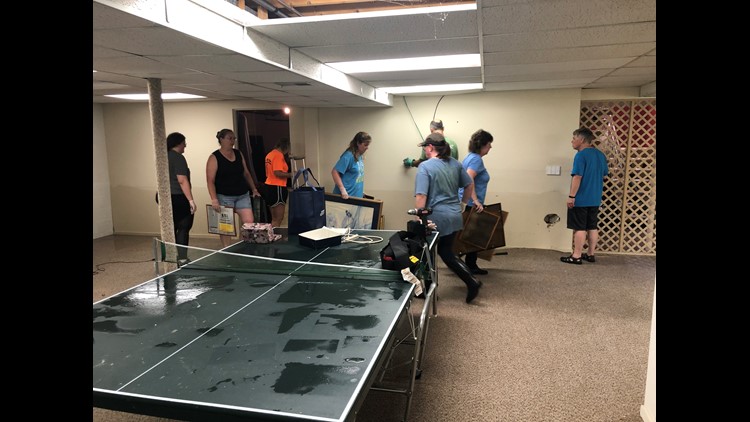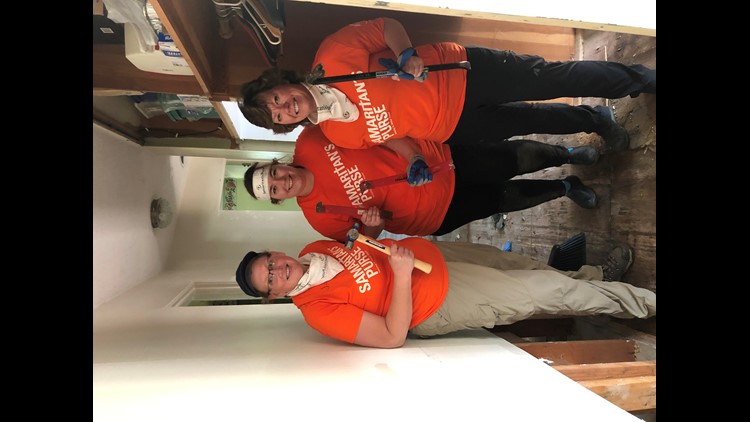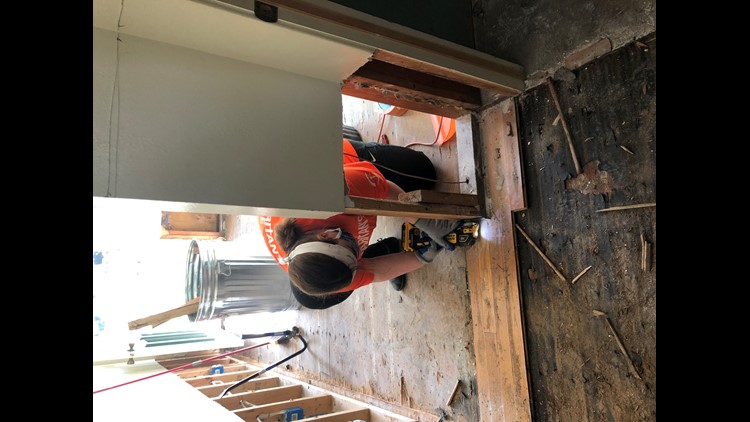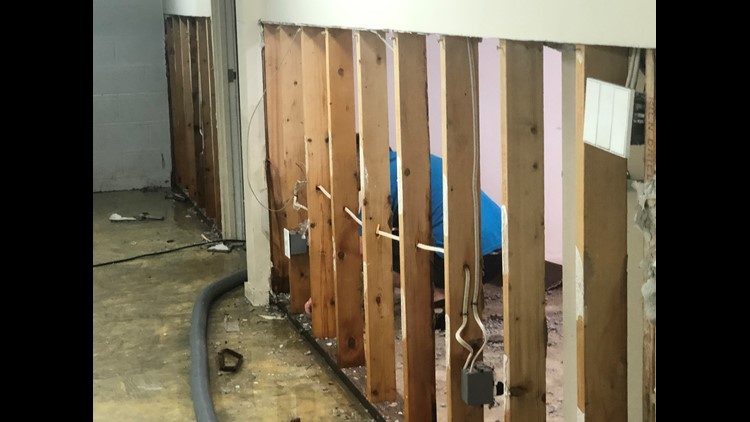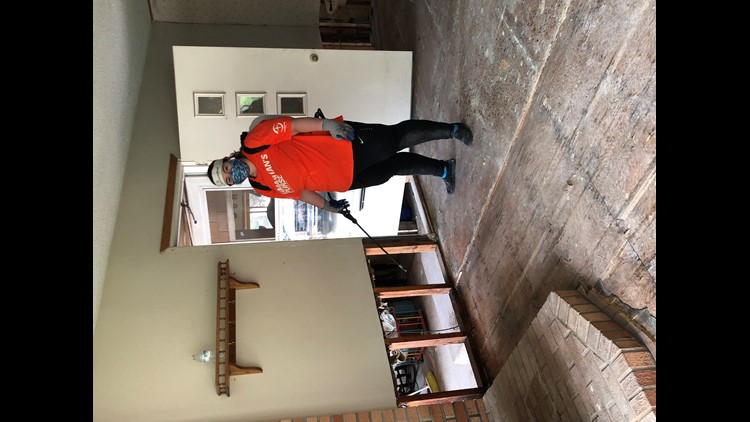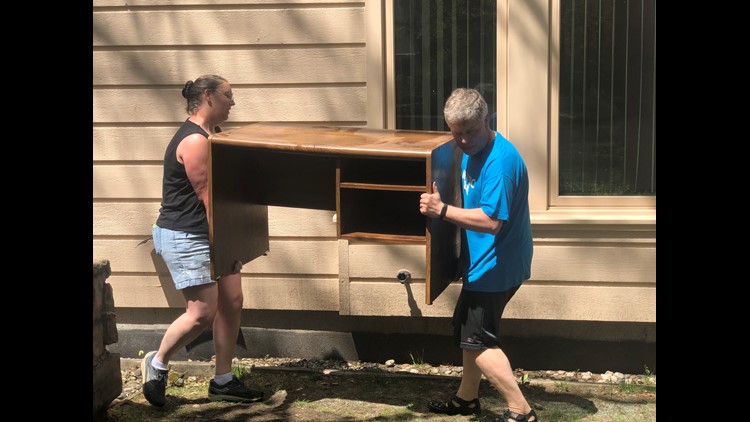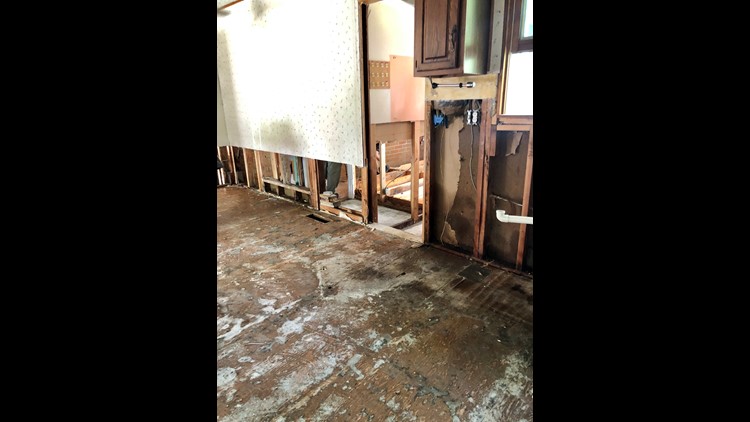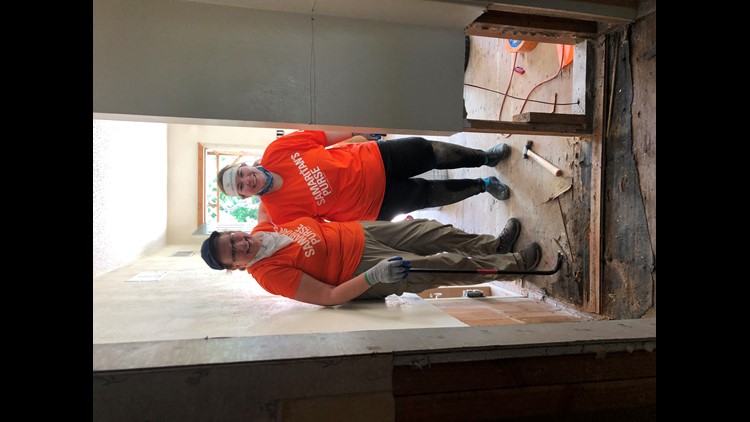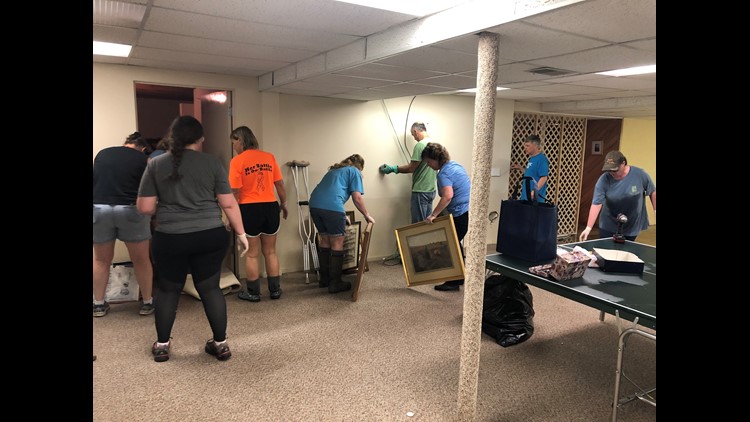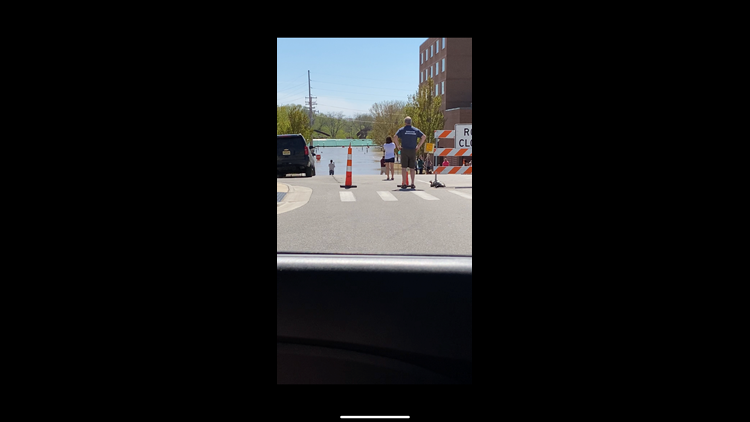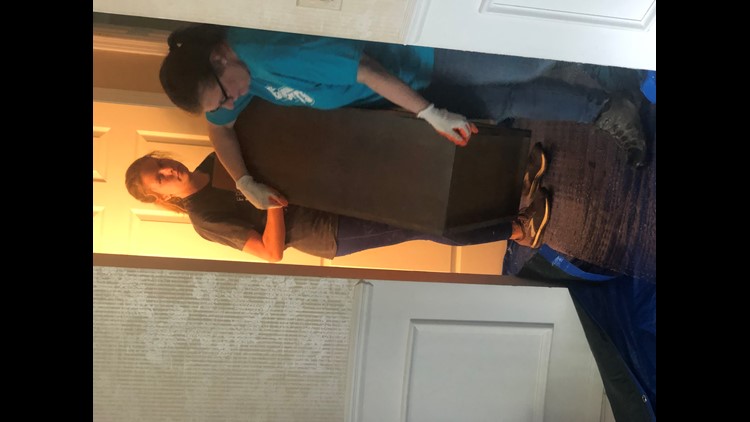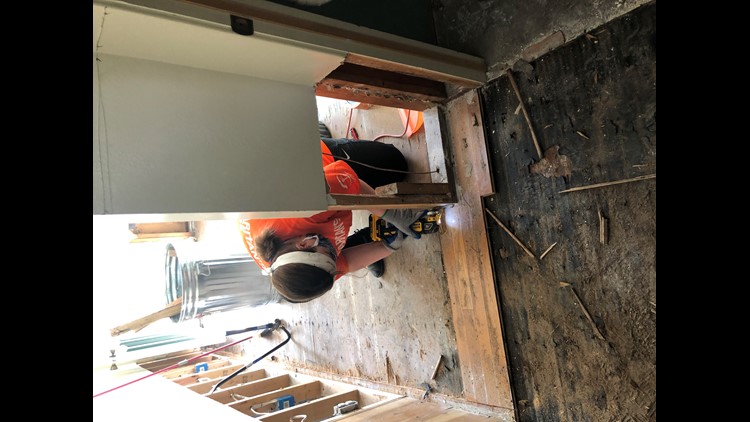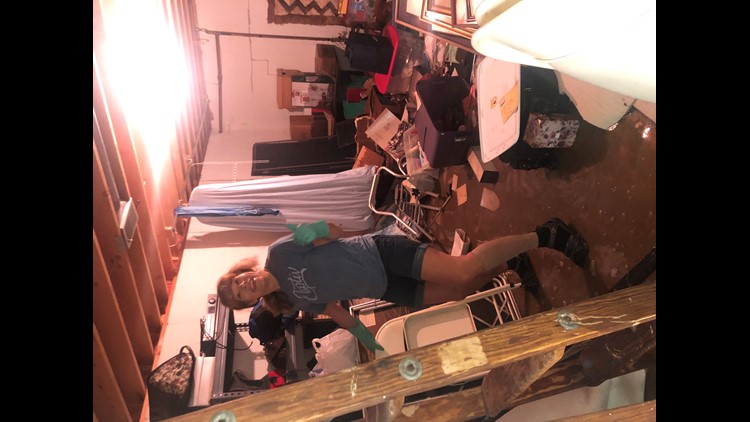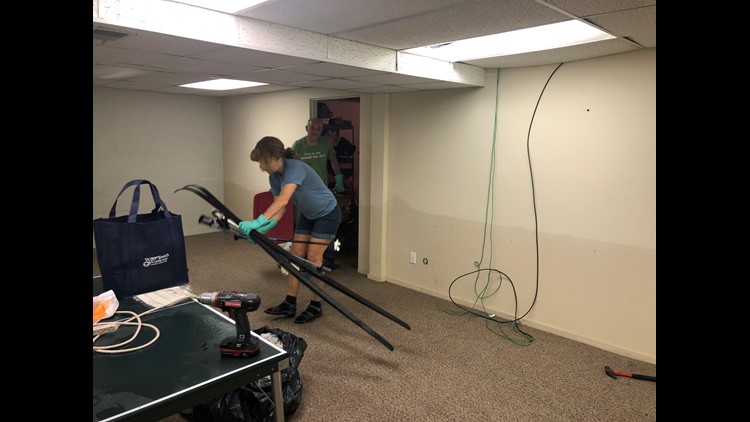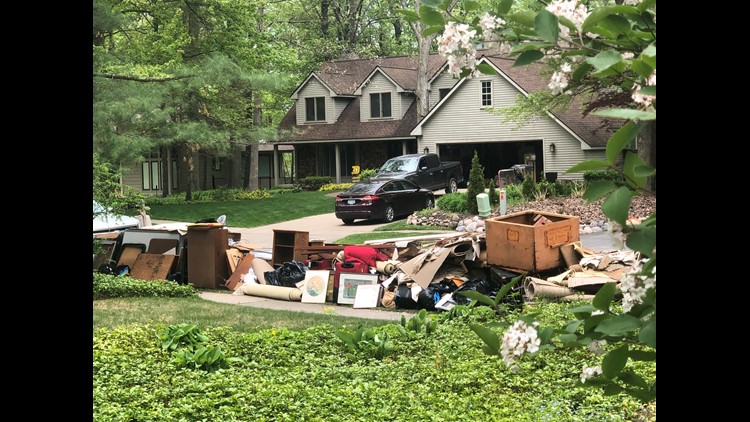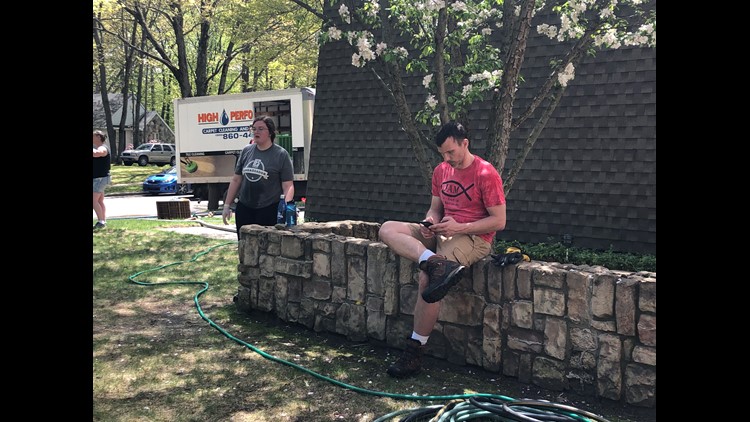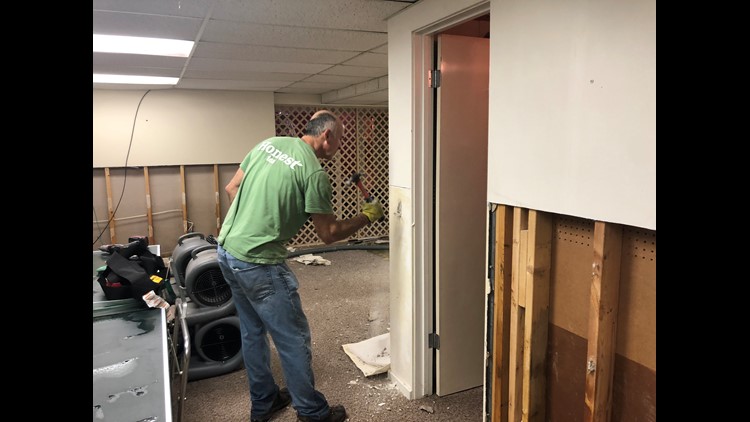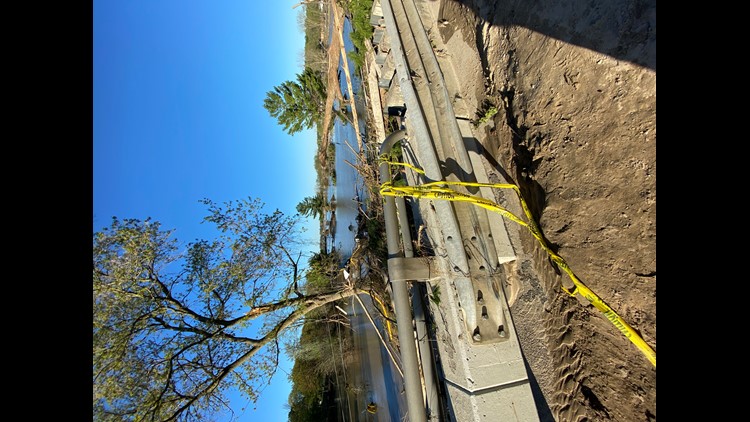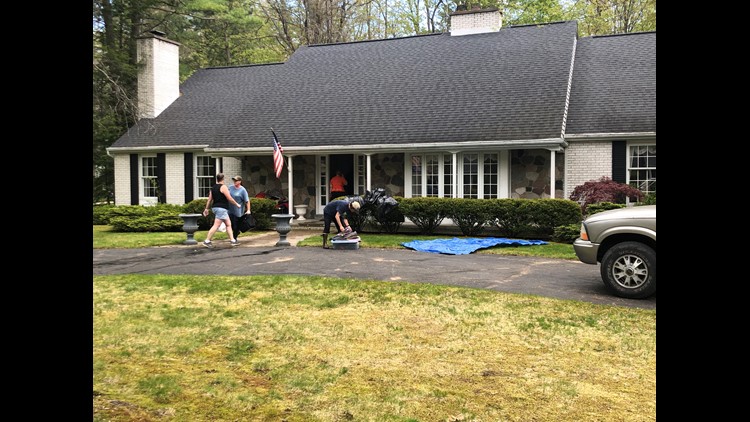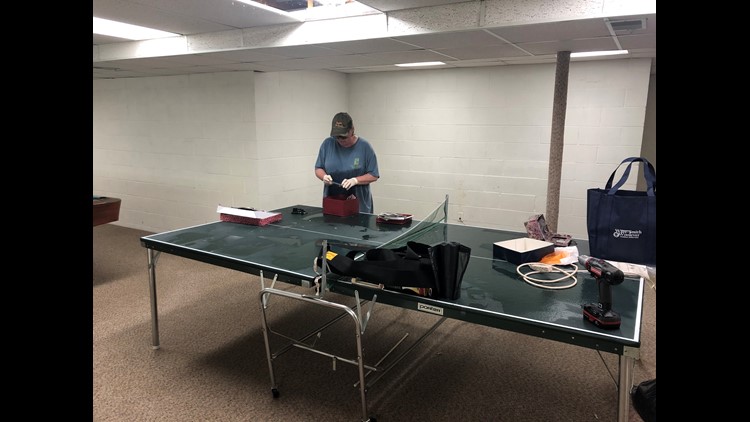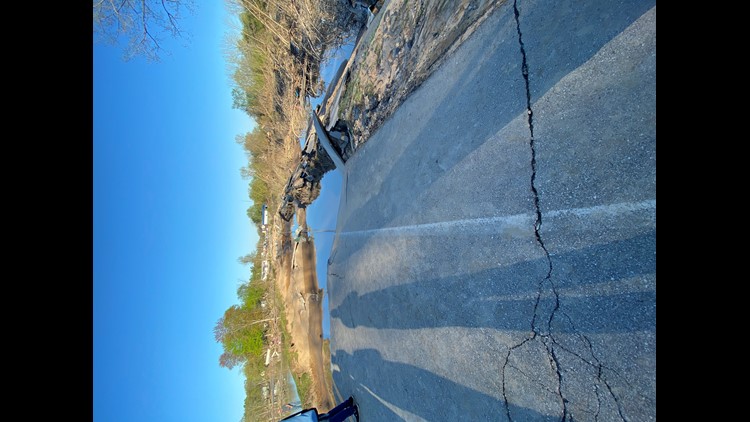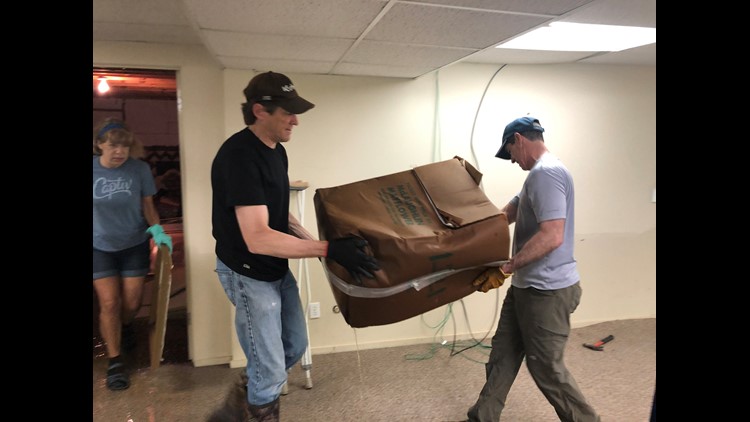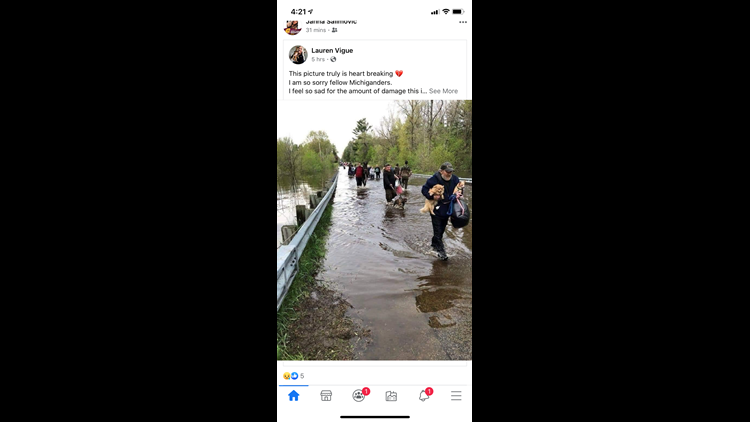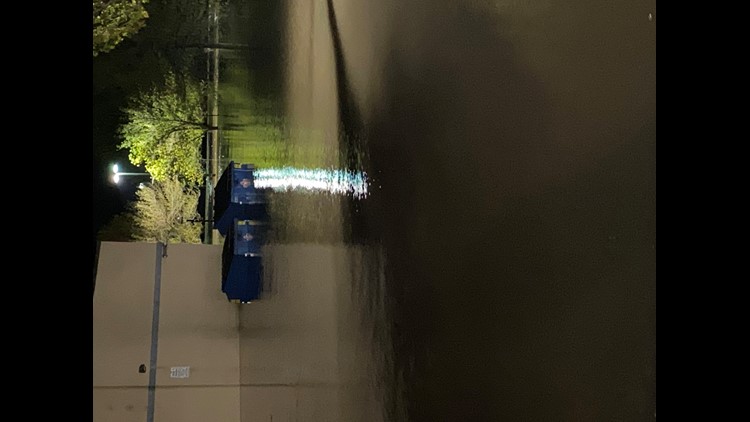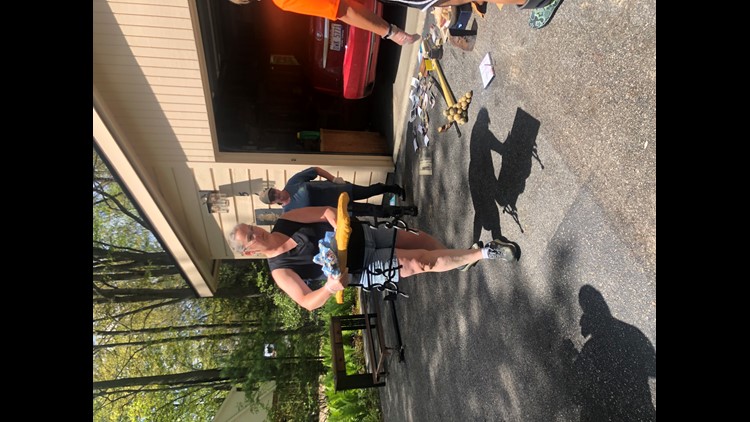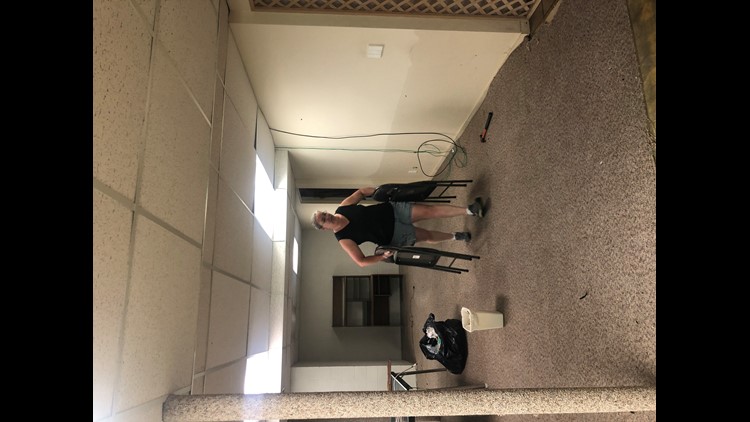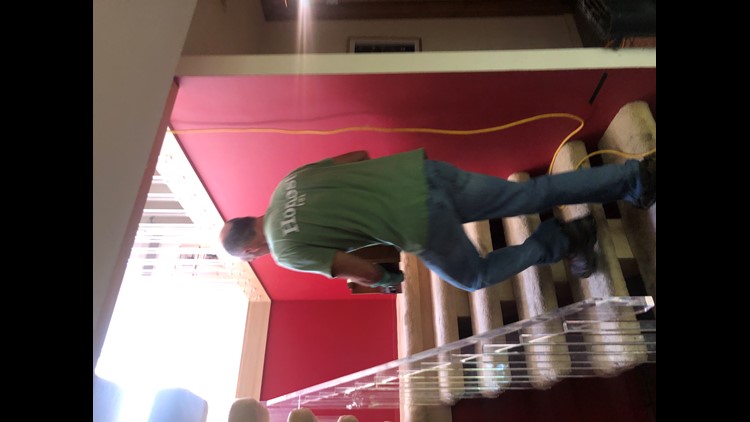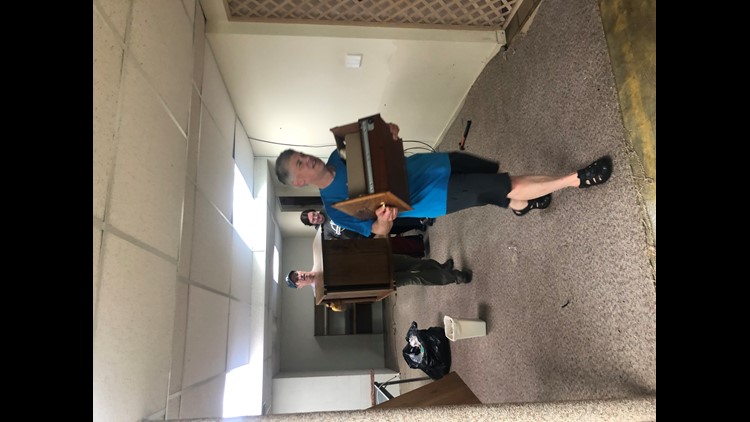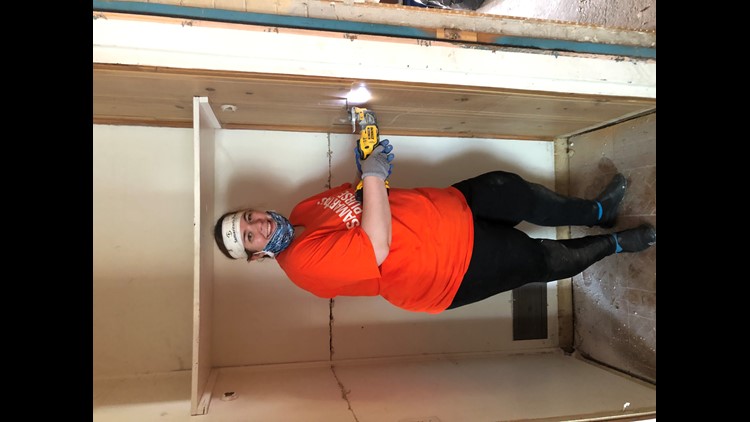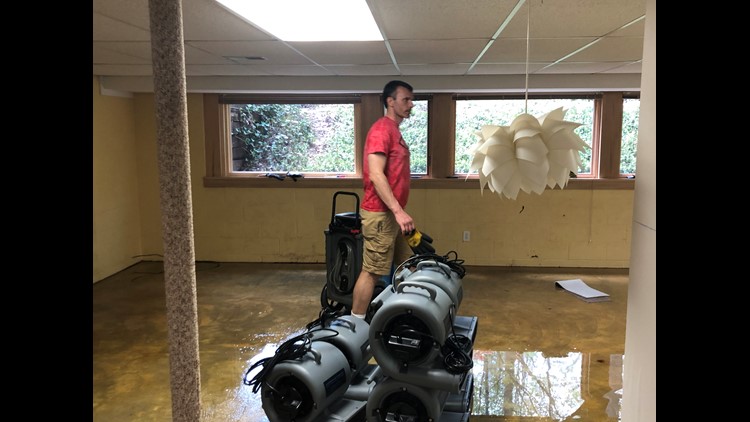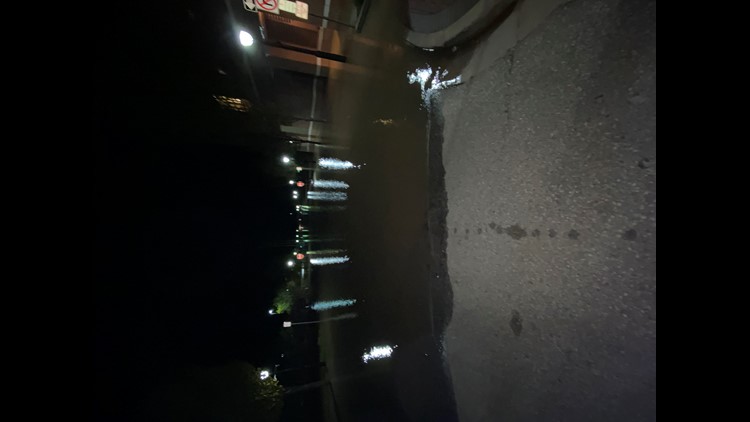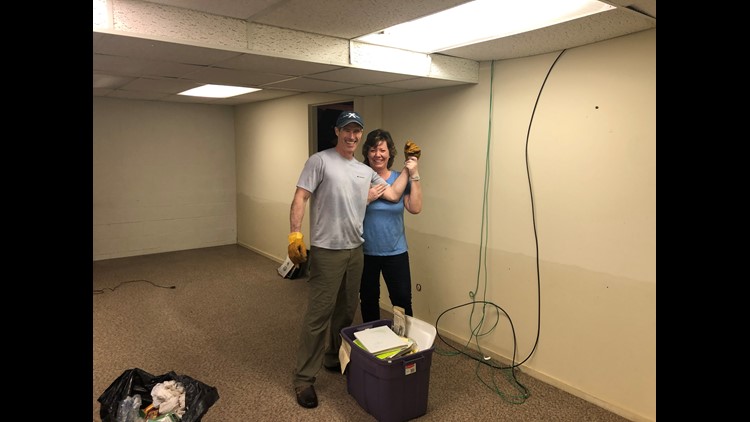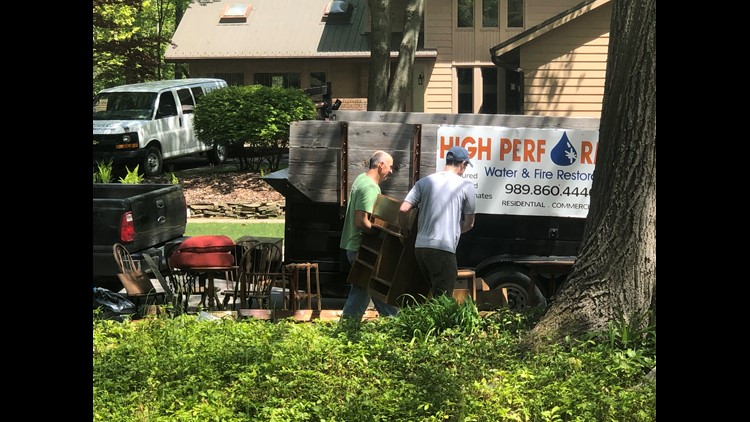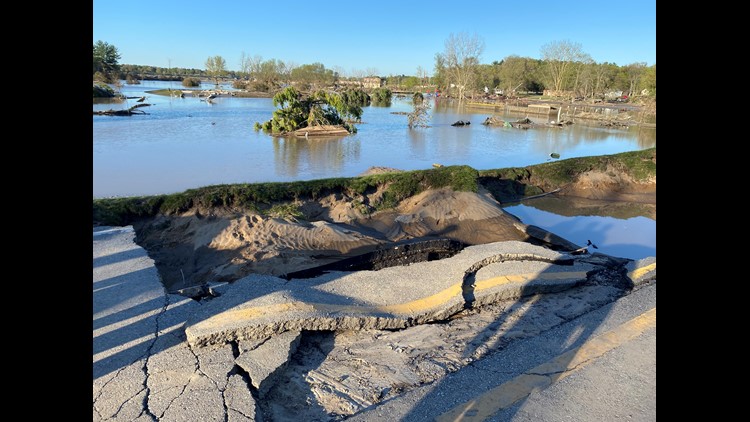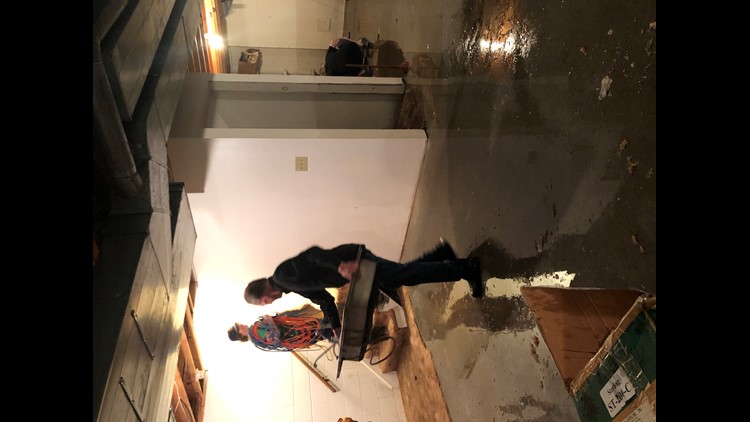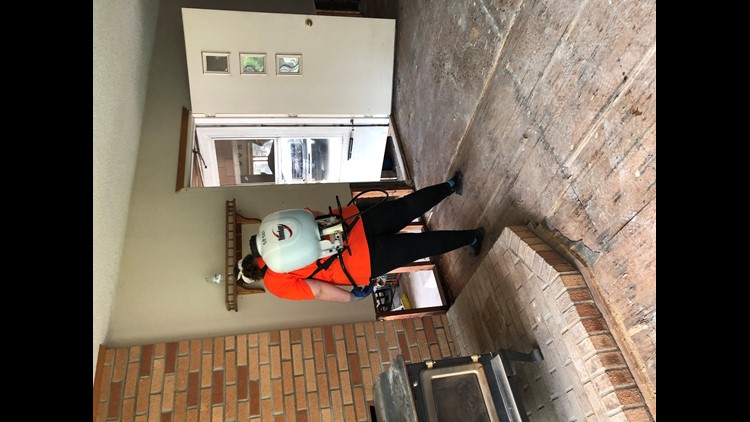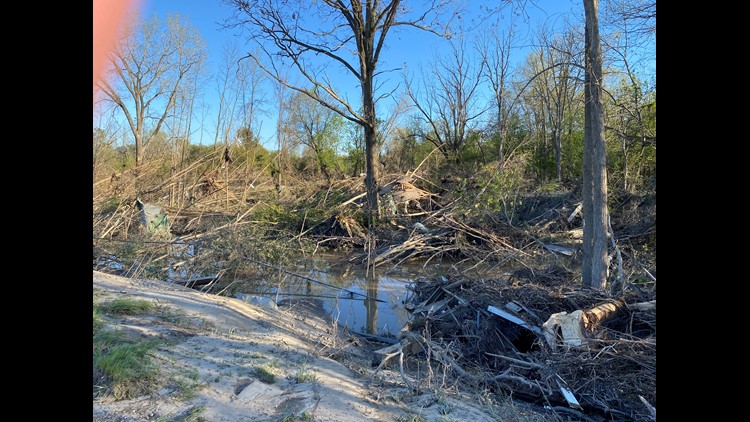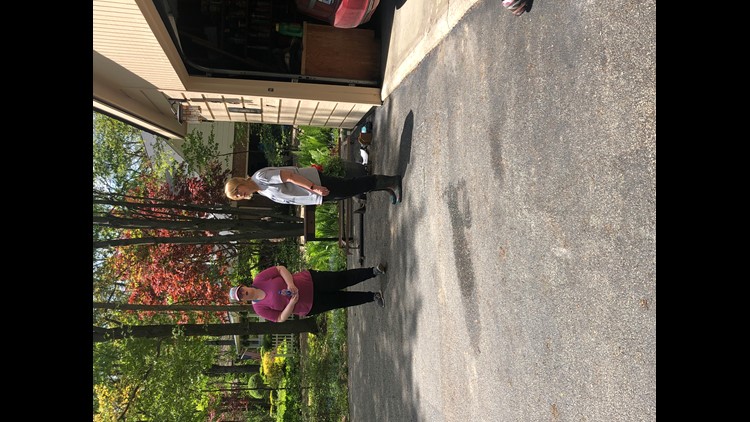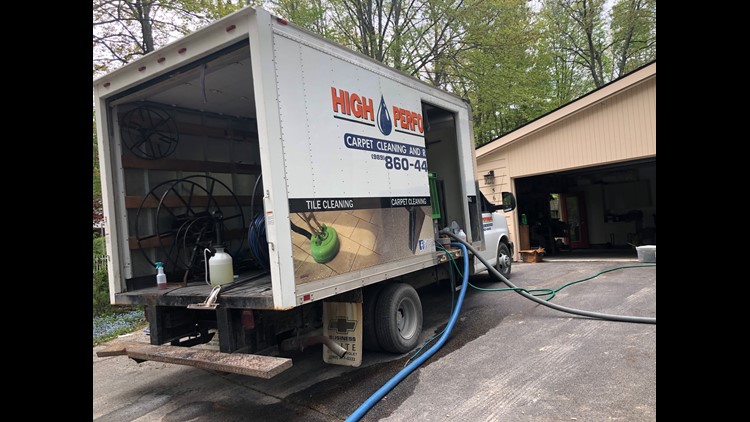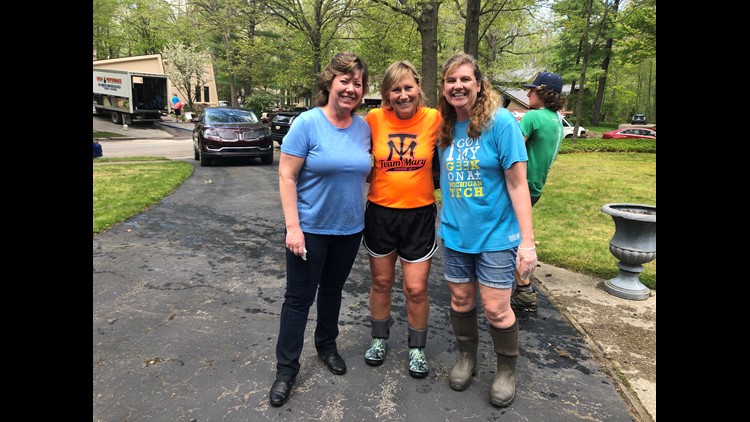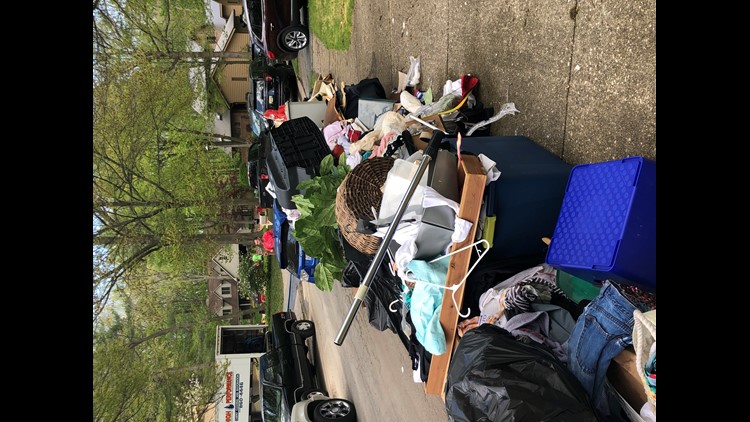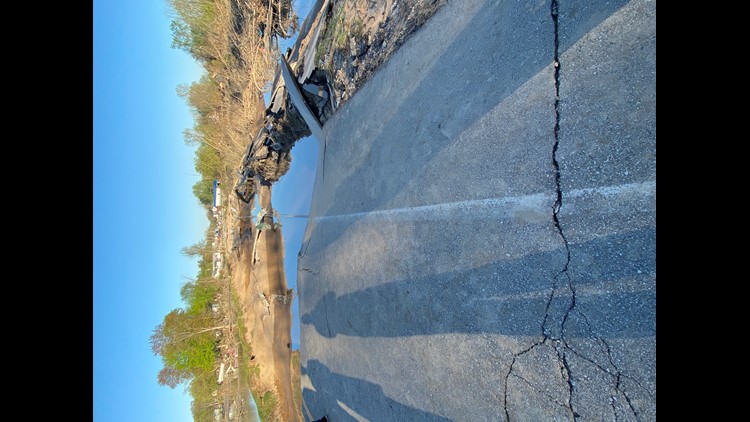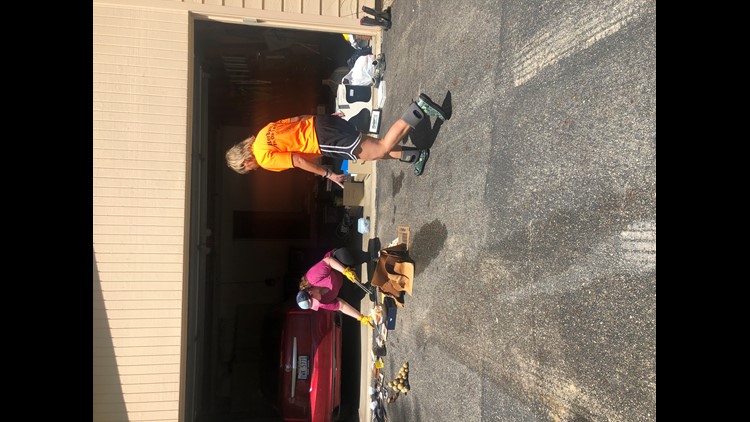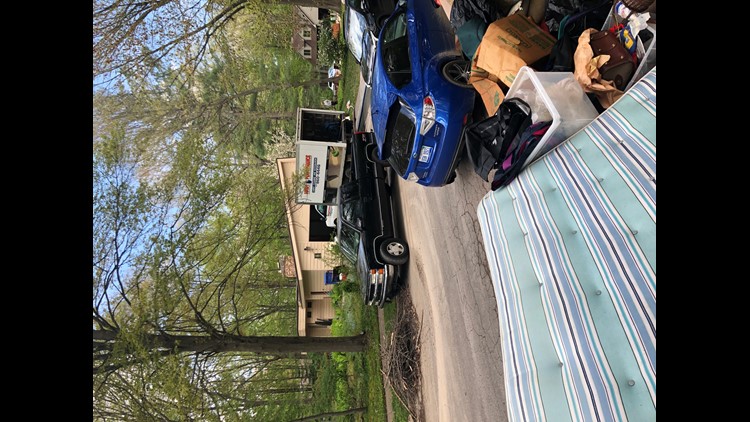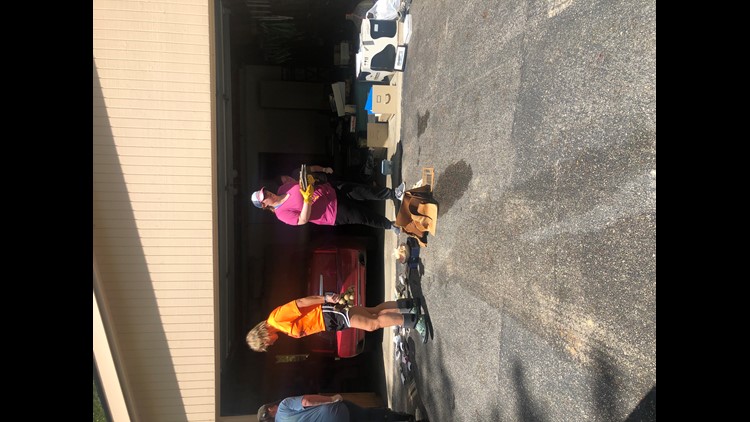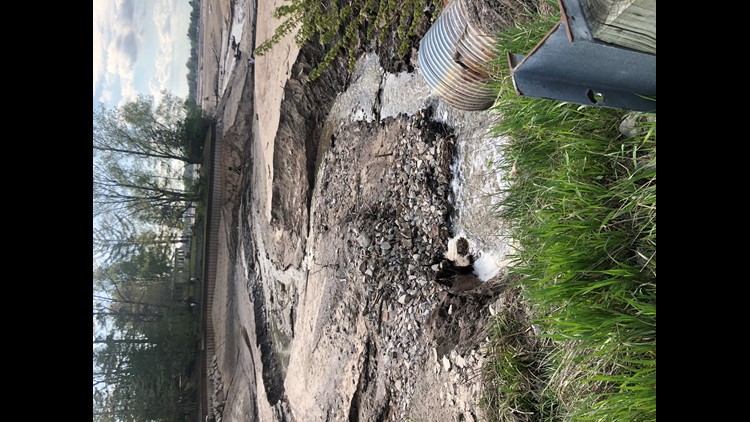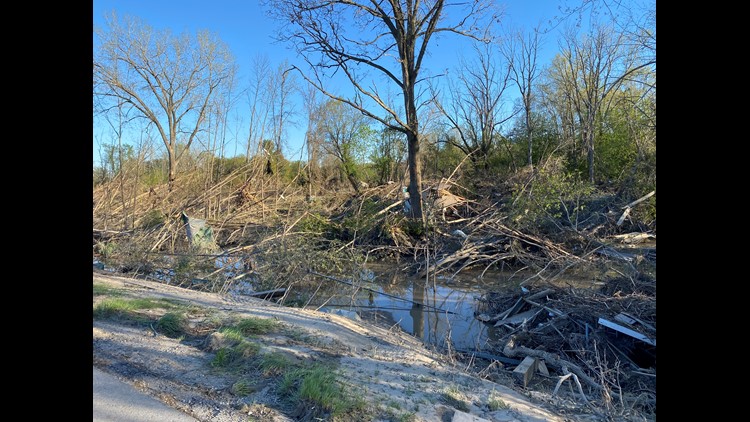MIDLAND, Mich. — One year ago, heavy rains caused the Edenville Dam near Sanford, Mich. to fail. That sent water rushing out of Wixom Lake downstream to the Sanford Dam, located a street away from downtown Sanford. That dam also failed, crippling the town. The heavy floodwater destroyed many homes and businesses.
Miraculously, the 500-year-flood claimed no human lives. However, the damage estimates are in the hundreds of millions.
One year later, many people are still rebuilding their homes, or trying to find a new way forward. Wixom Lake remains drained, a desert where a thriving lake once sat. The town of Sanford is a shell of what it used to be, even as some businesses have returned.
Handfuls of lawsuits have been filed on behalf of the flood victims. The former owner of the dams, Boyce Hydro Power, was fined $15 million by the Federal Energy Regulatory Commission (FERC). Boyce filed for bankruptcy protection, which was granted last month.

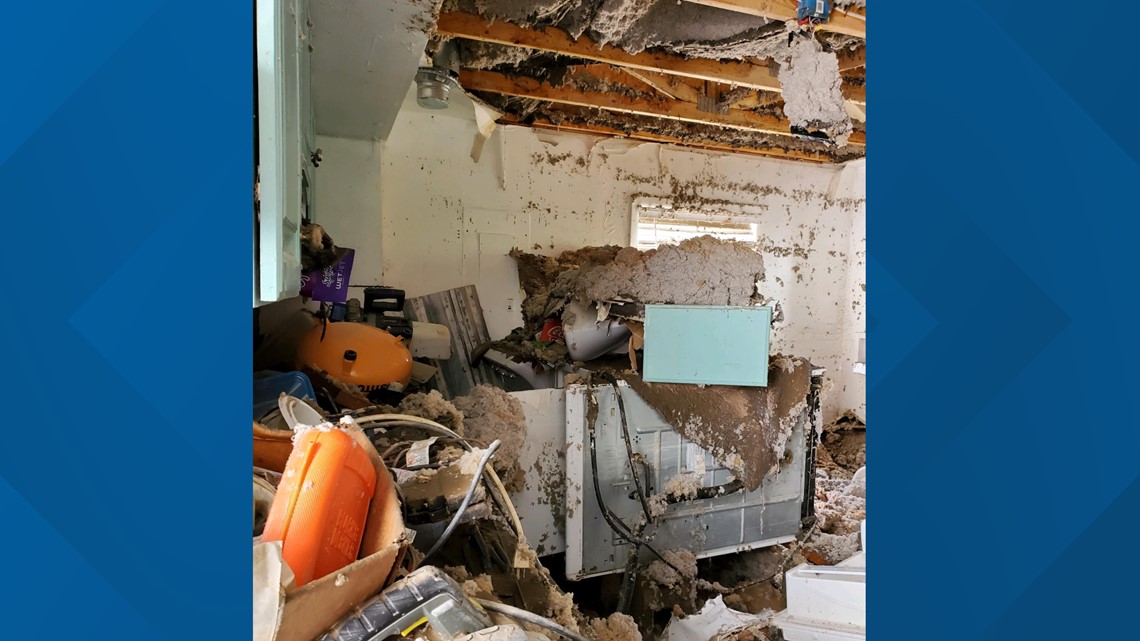
Rebuilding our dream home
Jerri Hodge knew when heavy rain was in the forecast in May of 2020, she may get flooding inside her home along the Salt River. So she and her fiancé, William Hopp, moved all their belongings three feet up from the floor.
Then, the dams failed. Water rushed upstream the Salt River, eventually filling their home at least a foot into the second floor.
They had evacuated, but returned to rescue animals on the second floor, once they realized how bad the flooding would become when the second dam broke.
“He went in, four feet deep, and started hauling the cats out,” said Hodge of Hopp. “He was putting them on a four by eight sheet of blue board, on carriers, and was floating them out. The neighbor came down with a life jacket, his Jeep and a rope, tied the rope to the Jeep. [Hopp] had the life jacket on and was going back in to float the cats out. Last time he came out, it was over his head. The water was rushing upstream so fast.”
Hodge said another neighbor tied himself to a tree, to help steady Hopp from floating away upstream. Watching this, she called it “the scariest moment of my life,” and “traumatizing.”
Prior to the flood, they had just spent years remodeling their dream home and filling it with new furniture. They also housed 25 pets: cats, hamsters and fish for Smart Paws Rescue.
“We were about three weeks from finishing when this flood came and took it all away,” said Hodge. “Everything was brand new, appliances, furniture, dishes, towels, everything in here was new."
At first, they did not know how they would save their home. They had figured it a loss, until a stranger in a pickup truck pulled up a few days after the flood and the water had receded.
“He said, ‘No, we can save it,’” said Hodge, “And I’m like, who is he? And he says ‘I’ll be back in a half hour.’ Then, 30 Amish people come walking down the street.”
Hodge said within six hours, the whole first level was gutted to the studs, and the house was sprayed to deter the spread of mold.


The next day, a Mennonite group came by to volunteer. The following day, another church group. In the past year, multiple church communities of all denominations and volunteer groups gave their time to help rebuild Hodge and Hopp’s home.
“They saved us,” said Hodge, “gave us hope, and it really changed the way you see the world and people.”
However, even with the work being done by volunteers, the rebuild was expensive. Hodge said they were not able to get flood insurance prior. They were able to take out a federal loan, and another loan from their credit union to pay for the repairs.
“I’m really frustrated, because I think our state let us down. They knew what he was doing and they weren’t making him fix his stuff,” said Hodge of the former dam owner. “We waited so long, and worked so hard to find this house, and then to fix it all up and have everything brand new. We worked so hard for that stuff and have nothing covered. We can’t get it back, you have to borrow money to get it back. Makes you very angry and frustrated.”
They plan to move back in within a few weeks, and continue to work on projects once living there.

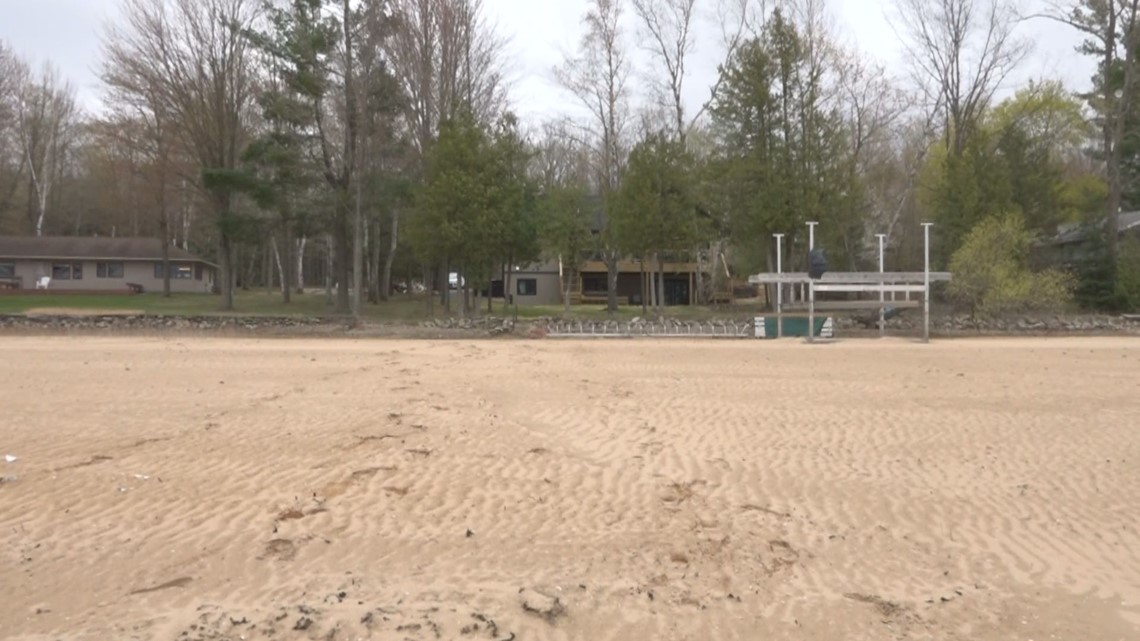
The former lake house
Josh and Lynn Blackmore built their house along Wixom Lake, dreaming of inviting adult children and future grandchildren to visit and enjoy.
When the heavy rain was in the forecast, the Blackmores did not think it would flood their home hundreds of yards from the lake and on a hill. Later that evening, the neighbors and fire department came by with bullhorns and sirens telling everyone to evacuate.
“Friends of ours came over with wheelbarrows and shovels,” said Josh Blackmore. “The neighbors came over with his tractor, and we started throwing sand in front of the house to build a berm. We built up a barrier, and it was still probably two feet of water pouring into the house.”
Josh tied their pontoon to a tree, as he watched Ski-Doos, docks and other debris roll past him. Thankfully, their home was spared from the floodwaters, which Josh said he feels a little guilty about given how many of their neighbors' homes were flooded.


But then, he heard a loud noise, “like a clap of thunder or explosion.” The Edenville Dam, holding all the water in the lake, had failed.
“It was like watching a bathtub drain,” said Lynn Blackmore. “To be fighting all that water for that period of time, and in an hour and half it was all gone. Just washed away.”
While the Blackmores' house on a lake still stands, the lake is gone. Josh Blackmore said the sandy area behind their house looks like “a wasteland.”
The lake draining had a big financial impact on the homes along its shores. Property values plummeted. Josh Blackmore said the county went through and reassessed the homes, so at least they are not paying taxes on lakefront property.
“If you own a house like ours, you’ve lost a lot of money,” said Josh Blackmore. “The devaluation in our house was hundreds of thousands. It wasn’t a cheap date for us.”
They are hopeful the lake will return one day, and the memories they hoped to make at the lake with their family will eventually happen. The Blackmores are supporters of The Four Lakes Task Force’s plan to rebuild the dams and bring back the lakes.

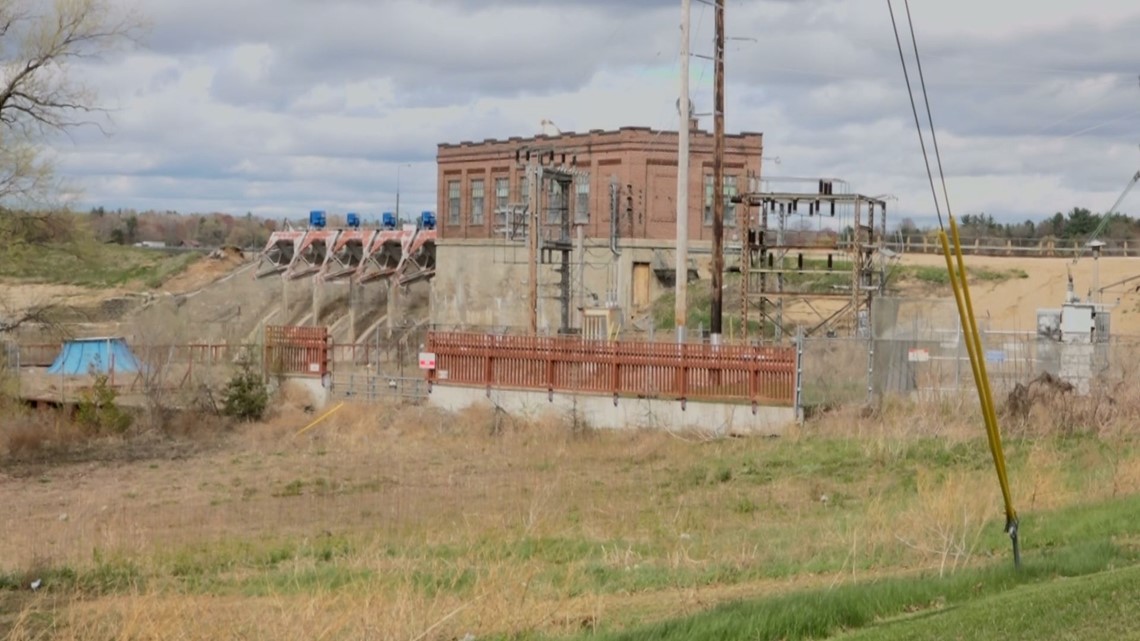
Bringing back the lakes and rebuilding dams
The former owner of the dams, Boyce Hydro Power, lost control of the dams in 2018. Now, the dams are owned and operated by a nonprofit organization called the Four Lakes Task Force (FLTF). It is run by area residents and industry experts. FLTF agreed to pay $1,576,000 to acquire the former Boyce Hydro properties. It took over the properties in December of 2020.
The ultimate goal of the FLTF is to rebuild the dams and restore lake levels.
“The spillway capacity on the Edenville Dam was never increased, even though it never met standards,” said Dave Rothman, the Vice President of FLTF. “And now, what we're trying to do is rectify that.”
The project, however, is a very large and expensive one. One of the first priorities is making sure the shoreline will not continue to erode after the flood.
“The flood, and the way the flood occurred on Sanford and Wixom Lakes, tore a lot of shoreline structure away from in front of houses,” said Rothman. “In many cases, that shoreline structure that was lost was what was keeping the shoreline bank in place, and keeping the earth in place underneath these homes. And without some kind of remediation, the shoreline would continue to erode, and eventually the structures on the property would be threatened with collapse.”
Rothman said they sent a survey out to homeowners in the areas affected by the flood, and there was a tremendous return response. 90% surveyed said they wanted the lakes to return.
However, multiple sources of funding will be needed to restore the lakes. The task force is working with the state and federal government, applying for grants and working with other assistance. Still, there may be some property owner financial involvement.
RELATED: Nearly one year later, Midland County flood victims face financial challenges as lawsuits continue
“The amount of engineering work approval permits, environmental studies and so forth that you have to do to get a dam reconstructed is staggering,” said Rothman. “Well, we have four of these to do.”
You can read more about how the FLTF plans to restore the lakes and dams by visiting their website here.
The Michigan Department of Environment, Great Lakes, and Energy (EGLE) stabilized the Tobacco River side of the Edenville Dam last summer, and lowered the water level by 13 feet. Stabilization work on the Tittabiwassee River side should begin this summer. Currently, the water is not running through where the dam is located. Instead, it flows through a farmer’s field.
“Wixom lake is the biggest challenge, because it has a dam that's over a mile long,” said Rothman. “We expect to start this construction work on that in 2024 and add water in by 2026.”

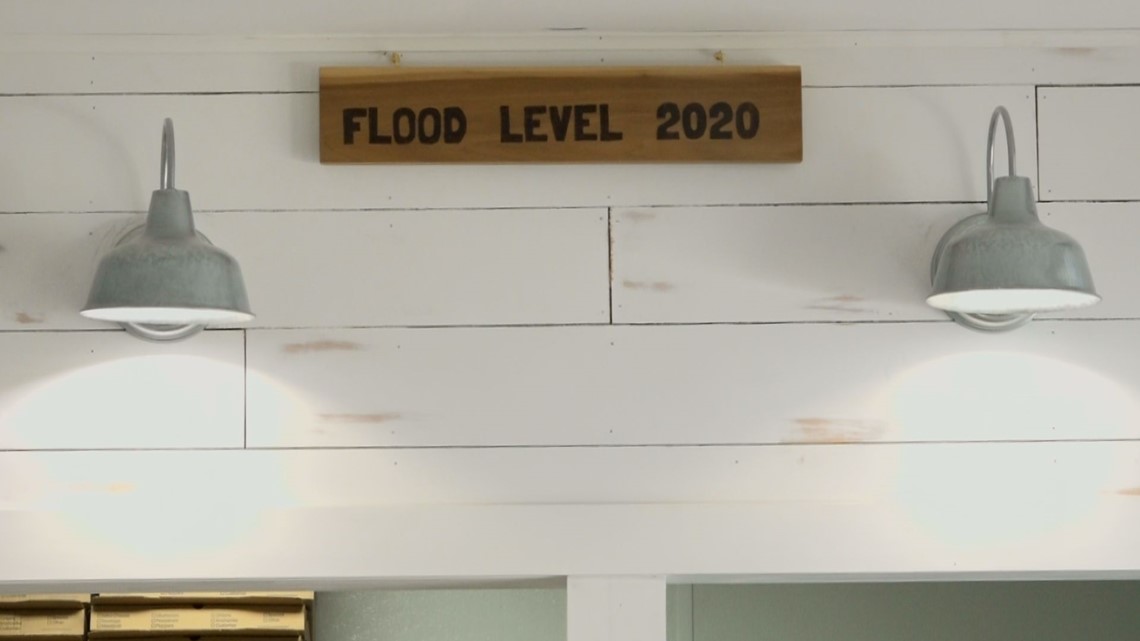
Bringing business back to Sanford
When Jackson Brady heard flooding was possible last May, he was not too concerned. His business, Jack’s Hometown Pizza in Sanford, is not in a flood zone.
However, when the second dam broke, it did not matter that the business was not in a flood zone. The entire downtown became a flood zone.
“It was underwater,” said Brady. “Yeah, it went for a little swim. We had water up 12 to 14 feet to our roof.”
When Brady returned after the flood, he walked in to extensive damage.
“I was thinking I would come in, and everything would be just soaked and a little dirty,” said Brady. “I came in, and there was 600- to 700-pound equipment flipped upside down and twisted. It’s incredible how powerful it was.”
He managed to save one of the dough mixers, but nearly everything else had to be replaced. The side of the building was ripped off, and the neighbor’s shed was in the tree outside the building.
In another story of community support, the town began to chip in and help clean things out. After a lot of late nights, Brady and his family rebuilt Hometown Pizza. It reopened on Oct. 24, 2020, one of the first businesses to reopen in Sanford after the flood.
Brady said he contemplated moving the business to Midland or another city, but his wife convinced him to stay.
“She talked me into, you know, why don’t you stay in Sanford?” said Brady. “There’s no lake, they lost a lot of their jobs, businesses, a lot of their houses. There needs to be something. So, then we took it as a challenge. Let’s show everybody how strong the community is, and one-by-one, we’ll piece this back together.”
Brady said it was also tough thinking about “giving up on the town that raised you.”
However, like many of these other stories, Brady did not have flood insurance. He said FEMA was not helpful either. He paid for the rebuild himself. In a bittersweet moment, his grandfather passed away sometime after the flood. Prior to his death, he asked donations for the pizza shop rebuild in lieu of flowers for the funeral.
“It almost feels like a bad dream,” said Brady.

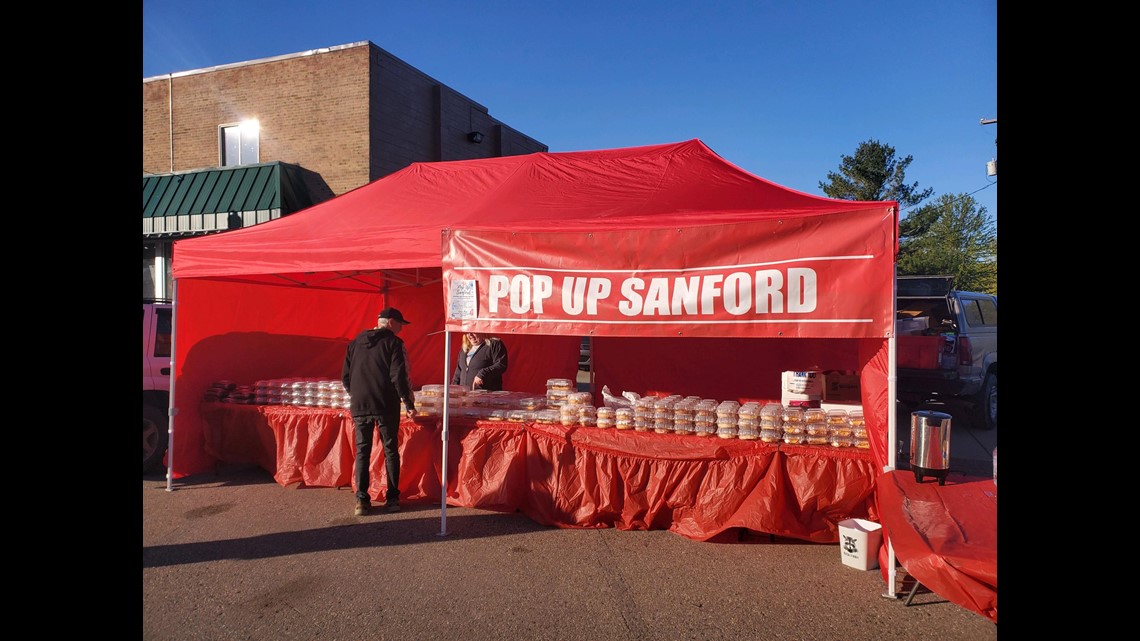
Pop Up Sanford
Jeri Hodge had seen the power of volunteers and donations while rebuilding their home. She helped organize a farmer's market in Sanford called Pop Up Sanford.
The goal is to raise money to bring back a restaurant, bakery and coffee shop to the village. All proceeds are working toward that goal.
Many vendors are welcome, ranging from crafts, baked goods and produce, who are willing to donate a portion of the sales to the village rebuild.
Hodge said the effort has been giving hope and life back to Sanford after the flood.
RELATED VIDEO: Nearly one year later, Midland County flood victims face financial challenges as lawsuits continue
Midland Flooding
►Make it easy to keep up to date with more stories like this. Download the 13 ON YOUR SIDE app now.
Have a news tip? Email news@13onyourside.com, visit our Facebook page or Twitter. Subscribe to our YouTube channel.

